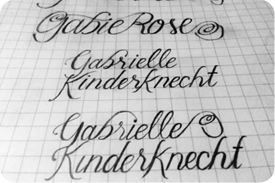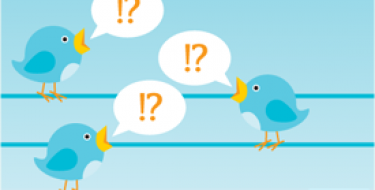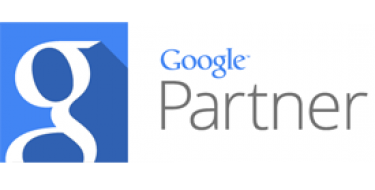Steps to Designing a Personal Logo & Portfolio
In my last semester at University of the Incarnate Word I will be creating a personal identity for my Senior Seminar class. I am excited to create an identity but I know it will not be easy to create something that will be memorable to designers who view my portfolio.
Sketch, sketch, sketch
I put a lot of emphasis on sketching because this is where initial concepts start. My professor mentioned to start drawing and throw away the first five concepts because the first ideas are the easiest and probably have already been done. Sketching several concepts will help you come up with the best solution possible.
In my seminar class, we are to complete 50 different concepts. The next phase will be to choose at least five strong concepts to move forward with.
If you are struggling with ideas the best thing to do is start a word list, here are some from my word list:
- Gabrielle Kinderknecht
- Gabie Rose
- Graphic Designer
- Illustrations
- Typography
- Rose
- Kinderconnect
Having this list helps you focus on what you want to communicate in your personal logo. Now to start sketching based on a word list, it is good to try variations like typographic approaches of your signature or initials — for example, Andrea Van Der Ree’s personal logo. Other approaches include illustrative solutions, type as image, etc.
After you decide on a logo the next step is to create an identity. The design in your marketing kit need to have the same graphic vocabulary as the logo, so that all pieces are unified.
Marketing kit
A marketing kit includes a business system (letterhead, envelope, business card, and website) and a leave-behind. When looking for a job it is always great to leave behind something other than your business card so that the potential employer has a small piece of your portfolio at hand to go back to.
For example, a leave-behind can be a small case study corresponding to an existing piece in your portfolio. A case study shows the process and phases of a project like sketches and progressions that assisted in achieving the final solution. More examples are brochures, self-promotional flyers, creative packages or printed images with key portfolio elements.
Building your own website or having your portfolio online on Behance can help you market yourself to potential clients or firms. Online portfolios are very important since most employers search for you online before considering an interview.
Early stages of a portfolio
When building a personal identity it is necessary to start making revisions to 10 to 12 existing projects that you are considering putting into your portfolio.
There are several types of portfolio layouts you can use. For my class our portfolio is required to be “bounded book style” so it is easier to change the order of projects or replace damaged pages when they are worn out. Flaunt is a great book that shows examples of portfolio styles and interview recommendations, etc.
After your personal identity is complete, you will need a portfolio case in which to store your work. You can order high-quality cases from KLO Portfolio, Pina Zangaro, or Fast Portfolio.
More information on portfolios
In my next blog, I will talk more about layout, size, and general answers to how a portfolio should look like and be to attract employers and clients. So stay tuned for next month to learn more about to how build a successful portfolio.
MONTHLY MARKETING INSIGHTS.
Get thought-provoking and actionable insights to improve how your firm makes a connection with your customers.





LEAVE A COMMENT